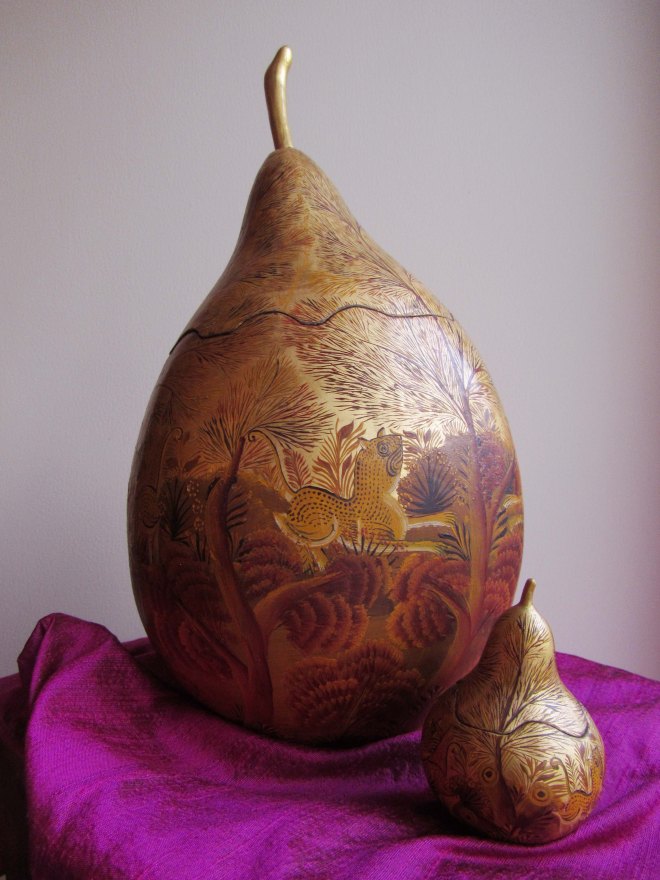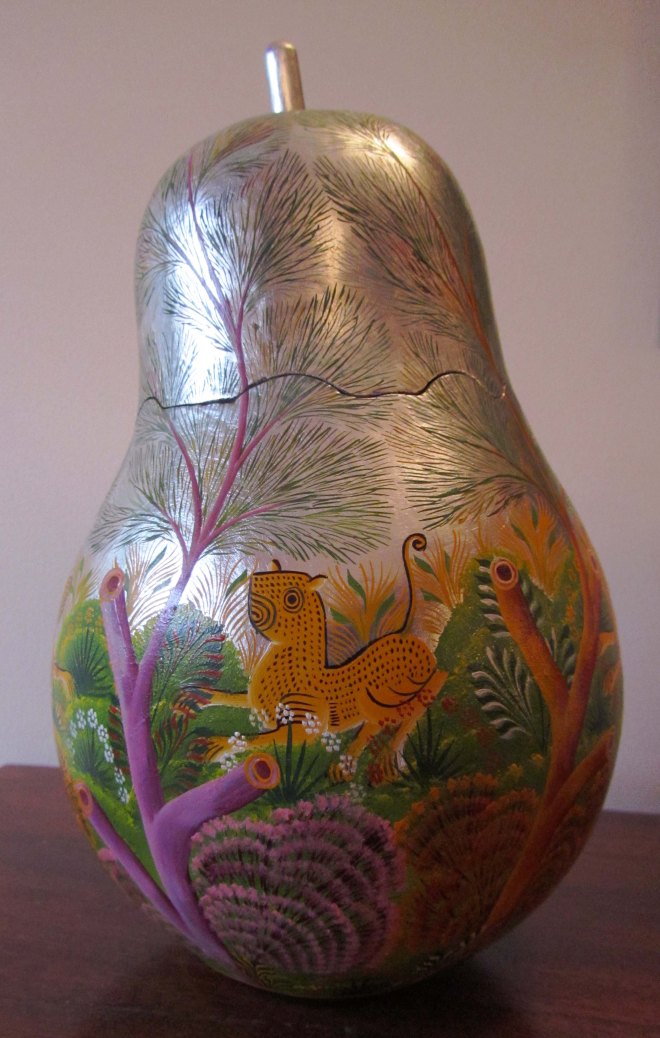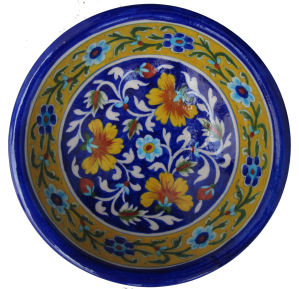
Dried rinds of gourds have been used by many cultures around the world as a versatile utilitarian vessel; for storing food articles and condiments, as drinking bowls,as well as resonators for musical instruments. These gourd vessels are immensely popular in Mexico, but here, the love for colours and artistry has translated these humble vessels into objects full of life and expression. This art of lacquering gourd vessels traces its history to an ancient time, even before the arrival of the Spaniards. Although, the technique and style have absorbed many new ideas since then, but the vibrancy and vigour of these lacquered or painted vessels is unmistakably true to the soul of Mexico.
Gourds or the fruits of the calabash tree, as said earlier, are used for making vessels from time immemorial. The local and popular term used for these gourds is jicara (a corruption of the Nahuatl word, xicalli). The dried rinds of these gourds are used as vessels, perforated ones as strainers and even as a protective head cover. The surface is elaborately worked upon, for instance, the vessels from Oaxaca and Tabasco are incised with intricate figurative and geometric designs. But the popular form of surface decoration is lacquer work, done by the gifted artists from the coastal states of Guerrero, Michoacán and Chiapas.[i]
The process of preparing these vessels is a long one, involving numerous days or even months. The first step is to choose the gourd, as they are found in different shapes and sizes, and let it dry out. Then they are cut into halves and soaked in water. This will make the inside rot, which will be scooped out and discarded. The prepared outer surface will be then applied a coat of oil from toasted seeds of chia (salvia hispanica)[ii] or aje, an oil extracted from an insect called scale bug, mixed with powdered earth, tierra. After which two more coats are applied of ground mineral paste and left until the surface hardens. The harden surface is painted with various floral and figurative motifs. A final coat of oil is then applied to seal the lacquer, making it heat and water resistant.[iii]

The surfaces are brought to life by artists, depicting gamboling rabbits, deer, tigers, birds perched in branches with plethora of blossoming flowers and motifs inherited from the colonial past. Today, the use commercially available colours have replaced natural pigments and the use of gold and silver has resulted in dreamlike effects.
I would like to thank my dearest friend, Snorre Westgaard, for introducing me to this craft. I would also like to extend my appreciation to Humana People to People India, for letting me see their collection and write on them. I also thank my friend, Rafael Sequeira, eminent archaeologist, for helping me with the local terminology related to this art.
[i]Chloë Sayer. Arts and Crafts of Mexico.(London: Thames and Hudson, 1990), 84.
[ii]Ibid, 84-85.
[iii]Ibid, 85.

nice…….
LikeLike
L’ha ribloggato su Ecumenics and Quakers.
LikeLike